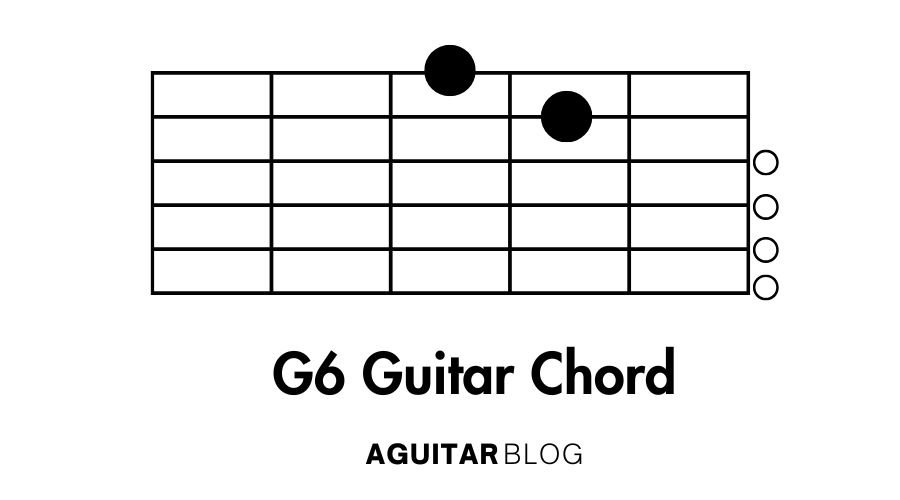The G6 guitar chord (G Major 6) is a warm and jazzy chord that adds subtle sophistication to your playing. It’s versatile and fits beautifully in jazz, blues, pop, and folk music.
What is the G6 Guitar Chord?
The G6 chord is a major chord with an added sixth interval. It combines the G major triad (G, B, D) with the sixth note of the G major scale (E).
Notes in the G6 Chord:
- Root: G
- Major Third: B
- Perfect Fifth: D
- Major Sixth: E
This combination creates a sound that’s bright, mellow, and slightly jazzy.
How to Play the G6 Guitar Chord

Open G6 Chord (Easy Version):
- Middle finger: Place on the 3rd fret of the low E string (6th string).
- Index finger: Place on the 2nd fret of the A string (5th string).
- Leave the other strings open (D, G, B, and high E strings).
Strum all six strings to produce the open G6 chord.
Barre Chord Shape for G6 (Root on the 3rd Fret):
- Index finger: Barre all strings on the 3rd fret.
- Middle finger: Place on the 4th fret of the B string (2nd string).
- Ring finger: Place on the 5th fret of the A string (5th string).
Strum all six strings for a full and rich G6 sound.
Video Tutorial G6 Guitar Chord
For visual learners, a step-by-step video tutorial can make mastering the G6 Guitar Chord much easier. Here’s a helpful guide for you:
(Insert or link to a relevant YouTube tutorial here)
Common Mistakes and Tips for Playing the G6 Guitar Chord
Common Mistakes:
- Buzzing Strings: Ensure proper pressure is applied to all strings, especially in barre shapes.
- Overlapping Fingers: Keep your fingers arched to avoid muting adjacent strings.
- Missed Notes: Double-check that the E (sixth) note rings clearly.
Tips for Success:
- For beginners, focus on the open G6 chord shape before tackling the barre version.
- Practice slow, deliberate transitions between G6 and related chords like G, Em7, or C.
- Use a capo on the 3rd fret and play the D6 shape as an alternative.
Chord Progressions Featuring the G6 Chord
Common Progressions:
- G6 – C – D – G6: A mellow progression perfect for acoustic tunes.
- G6 – Em7 – Am7 – D7: Popular in jazz and ballads.
- G6 – D/F# – Em – C: Adds a fresh twist to pop or folk music.
Songs Featuring the G6 Chord
- “Blackbird” by The Beatles
- “Dream a Little Dream of Me” by Ella Fitzgerald
- “Norwegian Wood” by The Beatles
Practice Tips for the G6 Chord
- Use Arpeggios: Practice picking individual notes of the chord to improve clarity.
- Smooth Transitions: Incorporate G6 into familiar progressions to build muscle memory.
- Experiment with Dynamics: Try different strumming patterns and intensities to explore the chord’s tonal range.
Conclusion
The G6 guitar chord is a delightful chord that adds warmth and sophistication to your playing. Whether you’re into jazz, folk, or pop, mastering G6 will open up new possibilities in your music. With consistent practice and creativity, you’ll make this chord a go-to in your repertoire.
